

Camellia is a resilient winter-blooming shrub. Some types display their most beautiful gems at the heart of winter.
Key Camellia facts
Name – Camellia
Family – Theaceae
Type – flower shrub
Exposure – full sun, part sun, shade
Soil – light, well-drained
Height: 3-16 feet (1-5 m) – Foliage: evergreen – Flowering: fall, winter
The bright color of its leaves marks a stark contrast to the sometimes jaded color of the winter sky.
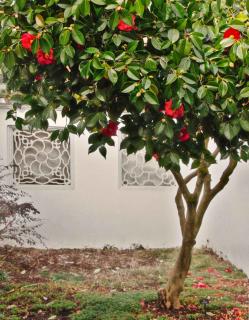 It is recommended to plant camellia preferably in fall to ease root development and allow for better blooming the following year.
It is recommended to plant camellia preferably in fall to ease root development and allow for better blooming the following year.
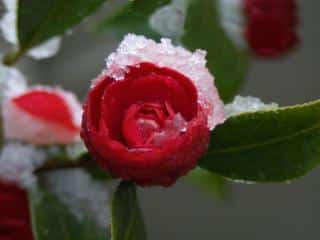 Mix one part heather, one part soil mix and one part garden soil
Mix one part heather, one part soil mix and one part garden soilCamellias need regular watering during the first 2 to 3 years if temperatures are high for better root development.
Snow will not damage your winter camellia. Quite the opposite: snow will protect if from hard freezing.
Do you wish to have flowers in winter on your deck, balcony or terrace? Camellia is ideal: on the one hand, growing in pots suits it well, and on the other, it blooms in winter.
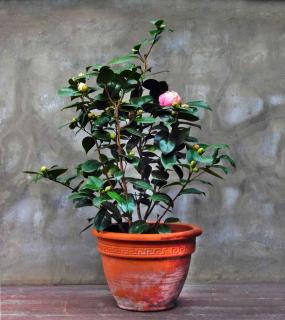 Choose a good-sized pot with drainage holes.
Choose a good-sized pot with drainage holes.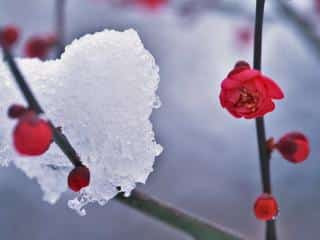 Its slow growth means that it doesn’t need any pruning and maintenance is reduced.
Its slow growth means that it doesn’t need any pruning and maintenance is reduced.
Nonetheless, if you wish to balance the shape or reduce the size of your camellia, wait for blooming to be over.
Certain camellias are part of a hedge, or are potted, and these must be pruned.
Take note that since this camellia will bloom in winter, you must wait for flowers to fall off before pruning your shrub.
Since camellia loves rather cool soil, you’ll have to water in case of prolonged dry spells or heat waves.
Lastly, thick pine bark mulch is the ideal solution to retain moisture in the ground in summer, protect it from from freezing in winter, and avoid weed growth.
 Don’t get confused when purchasing your camellia because blooming seasons can spread over several months.
Don’t get confused when purchasing your camellia because blooming seasons can spread over several months.
Indeed, not all will bloom in winter. Check labels to get blooming in the months you want flowers.
To choose your winter camellia well, the main varieties can be grouped depending on their blooming.
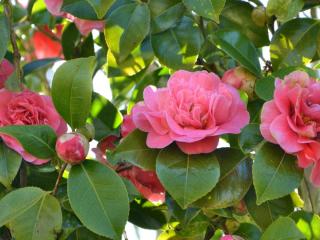 Thus, if you want flowers around Christmas, you might plant Japanese Camellia ‘Gloire de Nantes’ or if slightly later, the ‘Duchesse de Caze’.
Thus, if you want flowers around Christmas, you might plant Japanese Camellia ‘Gloire de Nantes’ or if slightly later, the ‘Duchesse de Caze’.
Note that the ‘Gloire de Nantes’, shown here, can bloom for an uninterrupted 6 months.
Read also:
Mulching with maritime pine bark keeps weeds from growing, protects against the cold, and enriches the soil with natural nutrients. It is also excellent for heather plants because it improves soil acidity. If you increase soil acidity around your camellia, flowering will increase in quantity and quality.